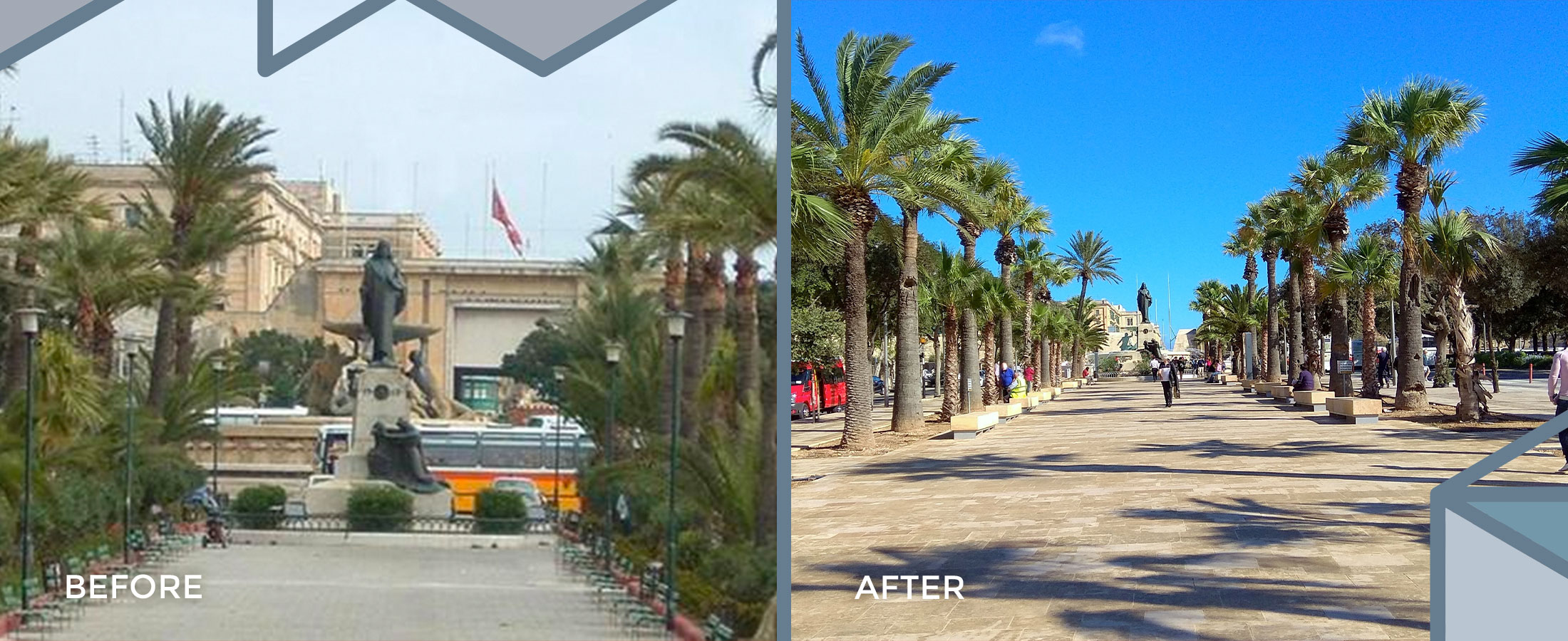Project Description
The area beyond the Valletta land front ditch and Triton Square is commonly known as the Biskuttin, now ithing the council boundaries of Floriana. It’s a wide and paved avenue lined with benches and trees that bisects Vjal ir-Re Dwardu VII. Its main feature is the imposing bronze statue of Christ the King by Antonio Sciortino, with a kneeling figure at the base representing the devotion of Malta to the Christian religion. This monumental statue was erected to commemorate the XXIV Eucharistic Congress held in Malta in 1913. Its strange name is reputed to have different origins but the most obvious is that since it’s a continuation of the Mall, which had been converted into a landscaped garden, many referred to this extension as ‘boseottino‘ (little garden) or Biskuttin in Maltese. In Maltese, the name Biskuttin also refers to an elongated pastry with rounded ends, of which the area does bear a resemblance.
The area had received damage during the war and some shrapnel scars are still evident on the statues and the nearby palm trees.
After the war, the Biskuttin was embellished with new paving, lights and benches and remained until the new project for Triton Square materialised.
As part of the Triton Square Project, the embellishment of the Biskuttin was another important area entrusted to the Grand Harbour Regeneration Corporation (GHRC). The works involved the replacement of most underground services, new paving, street furniture, planting of additional trees, the restoration of the Christ the King monument and a new lighting system. In addition, works were undertaken on both sides of King Edward VII Avenue, on the side of the Phoenicia Hotel and the opposite side to serve as access to the bus terminus and facilitate the alighting of passengers from the busses.







